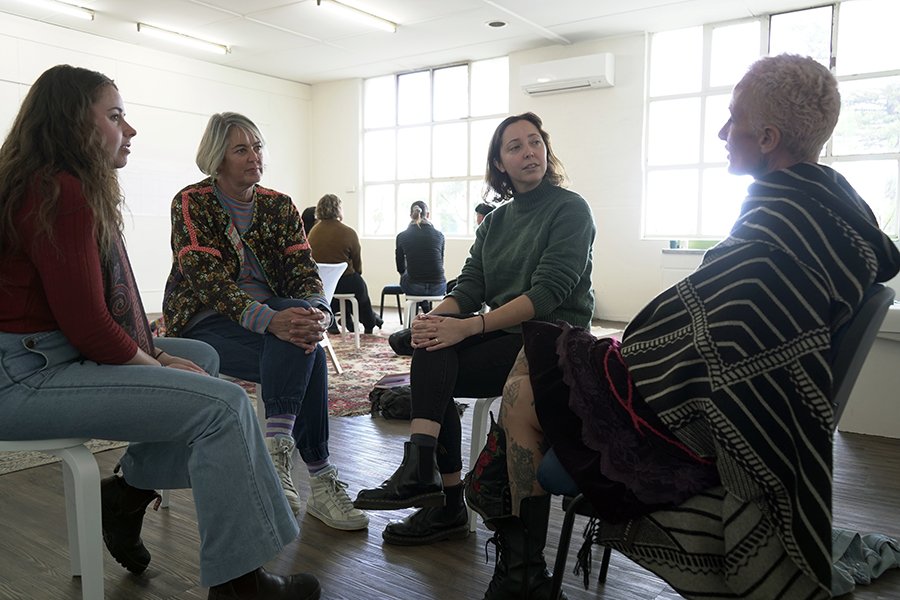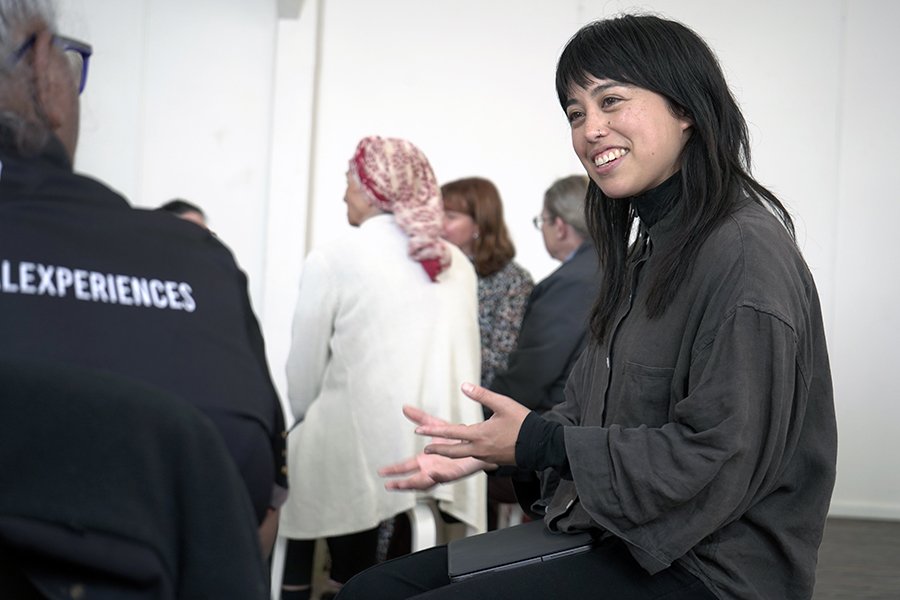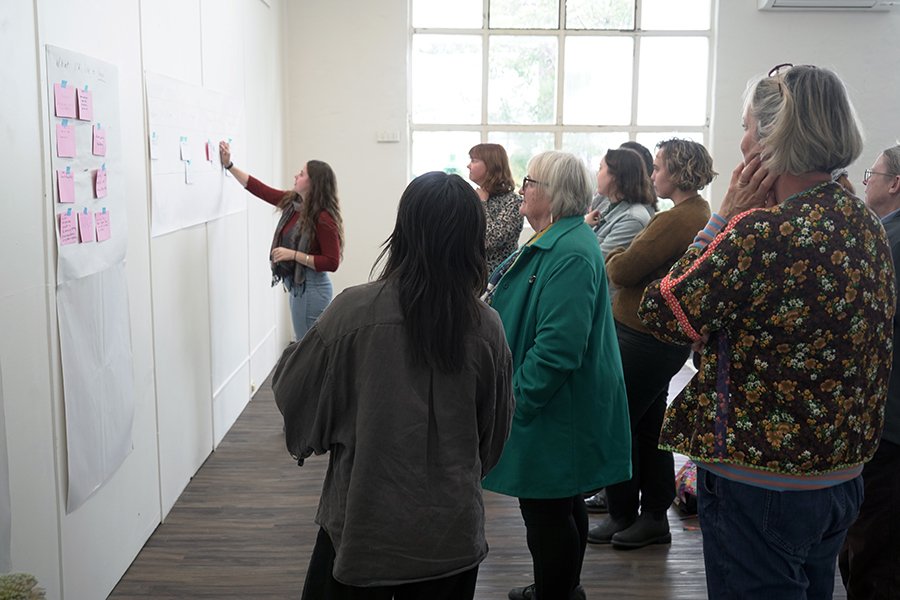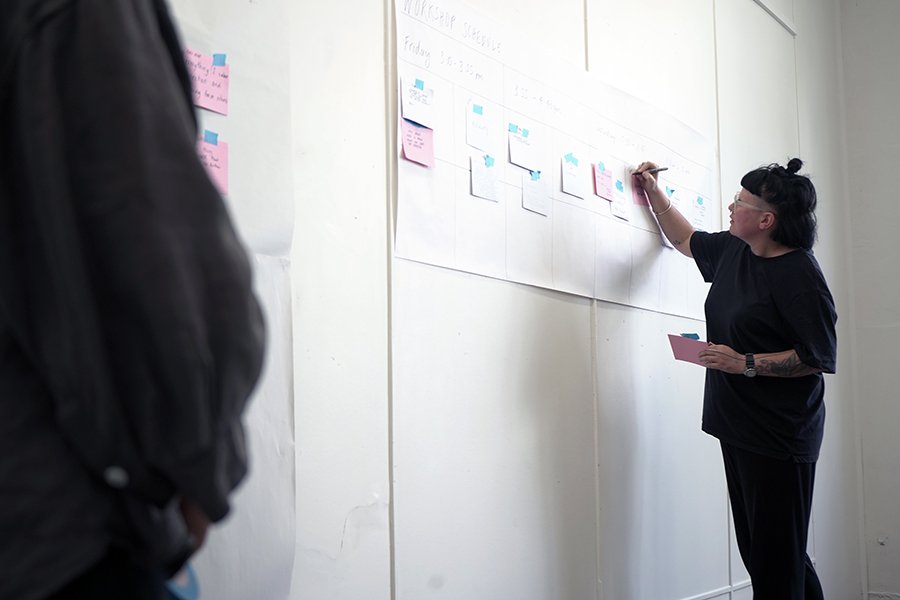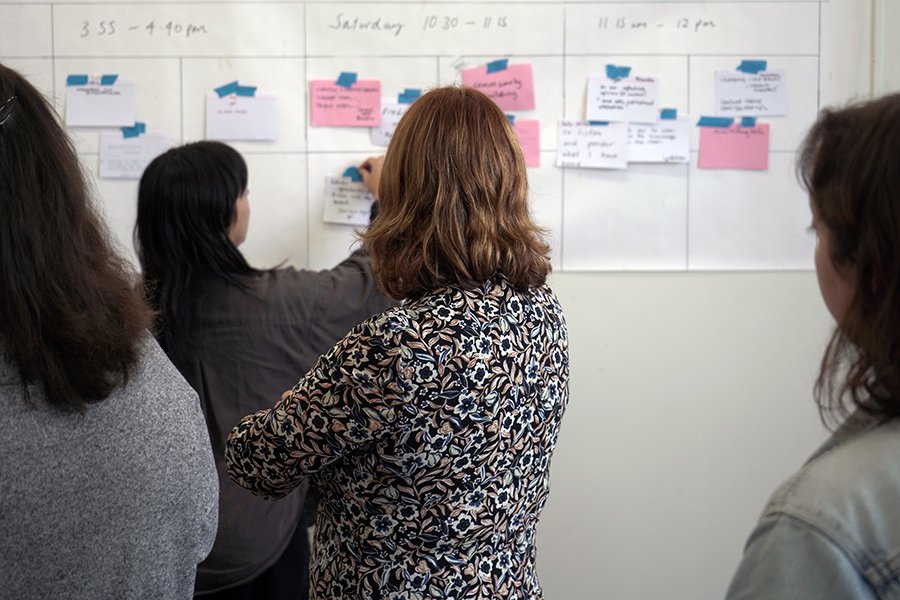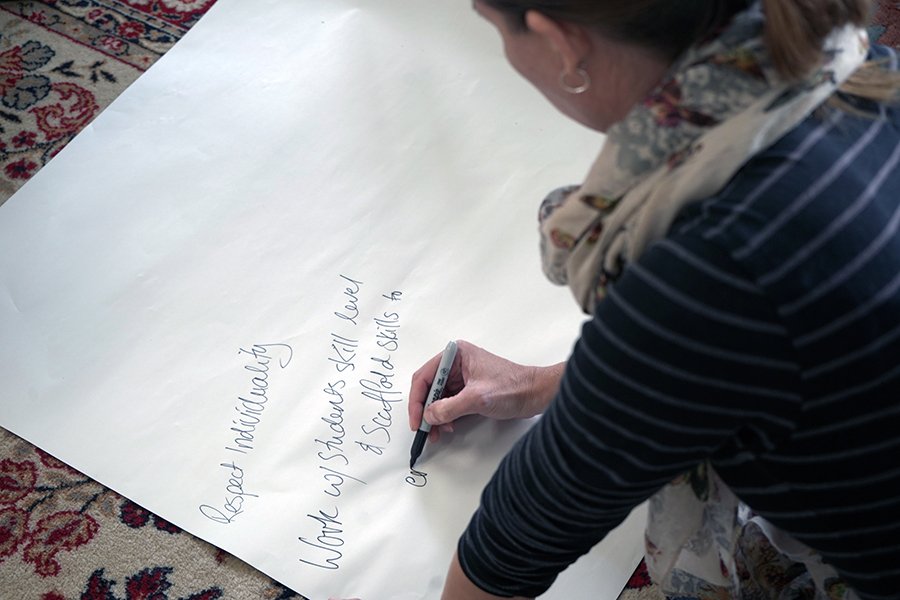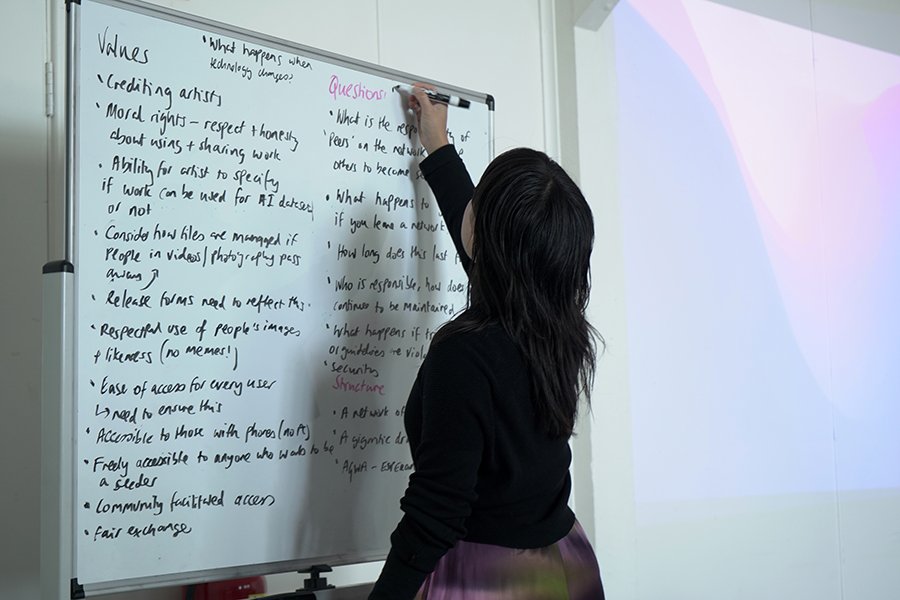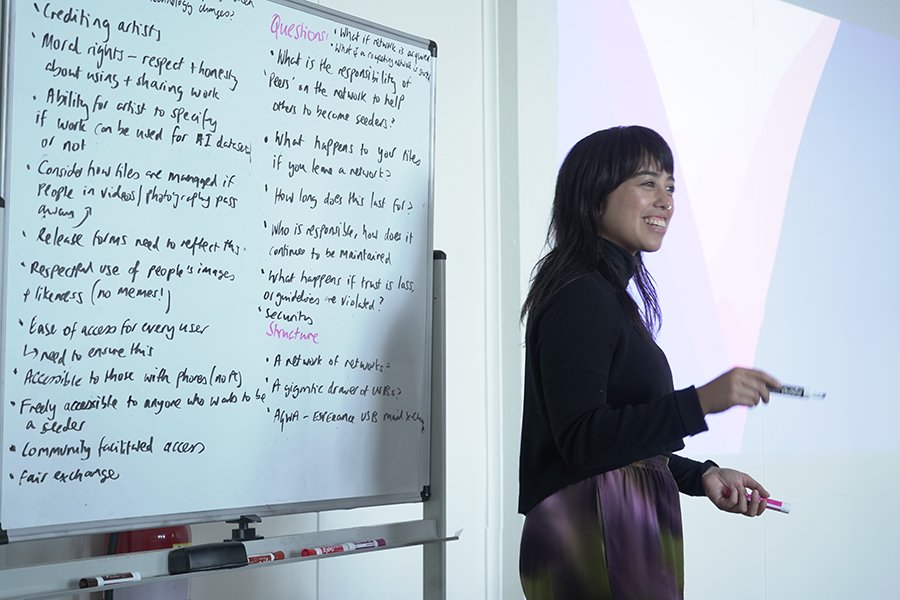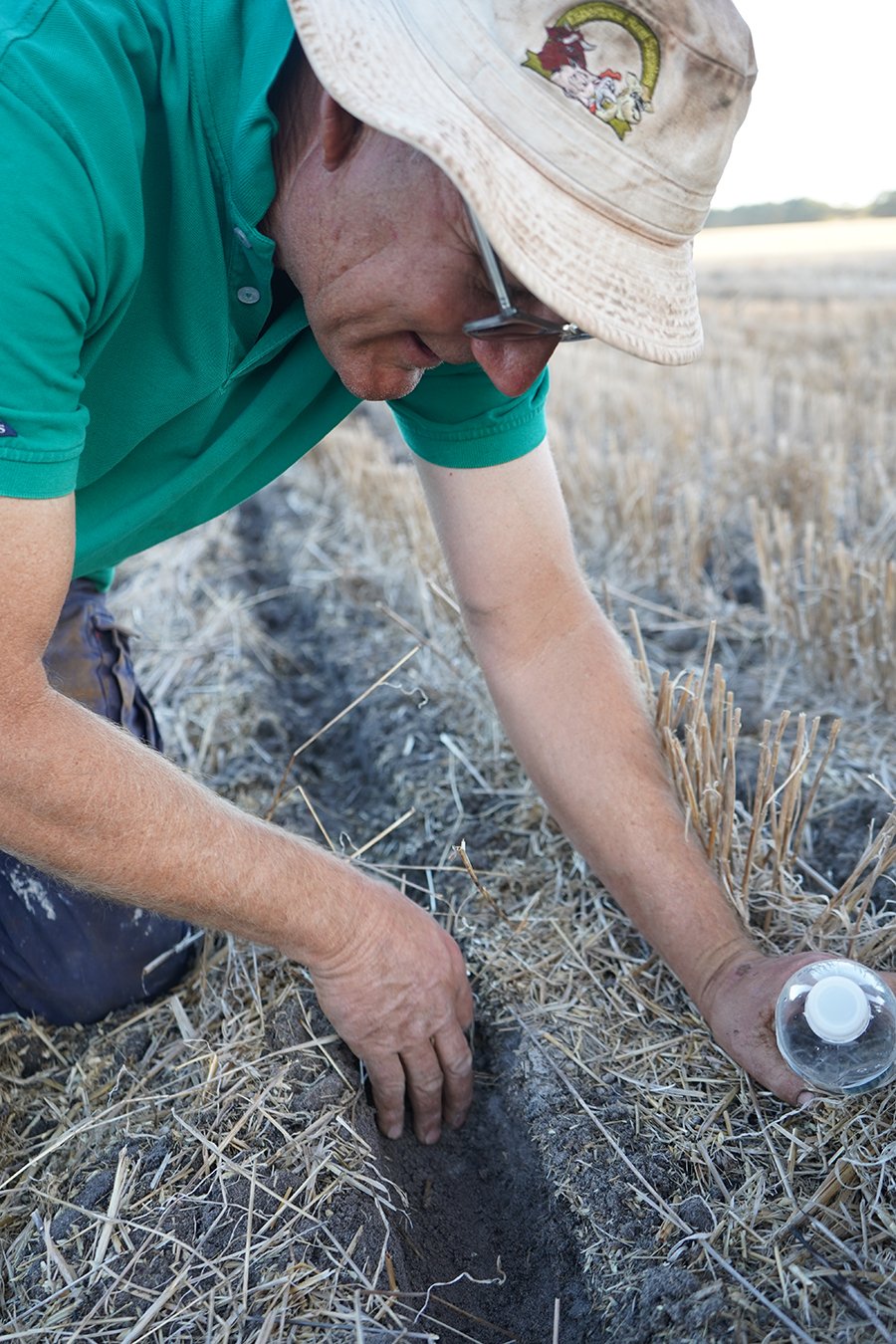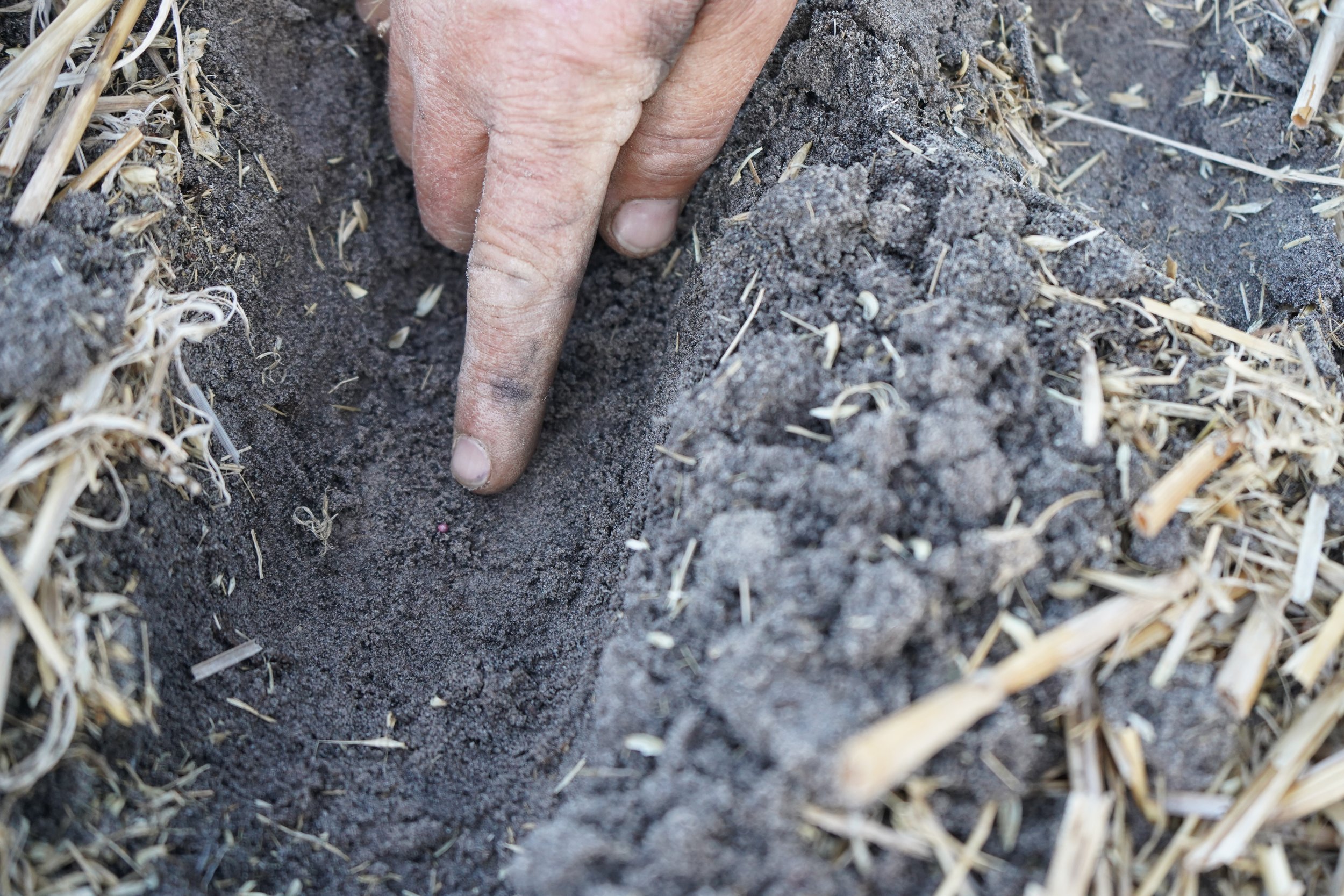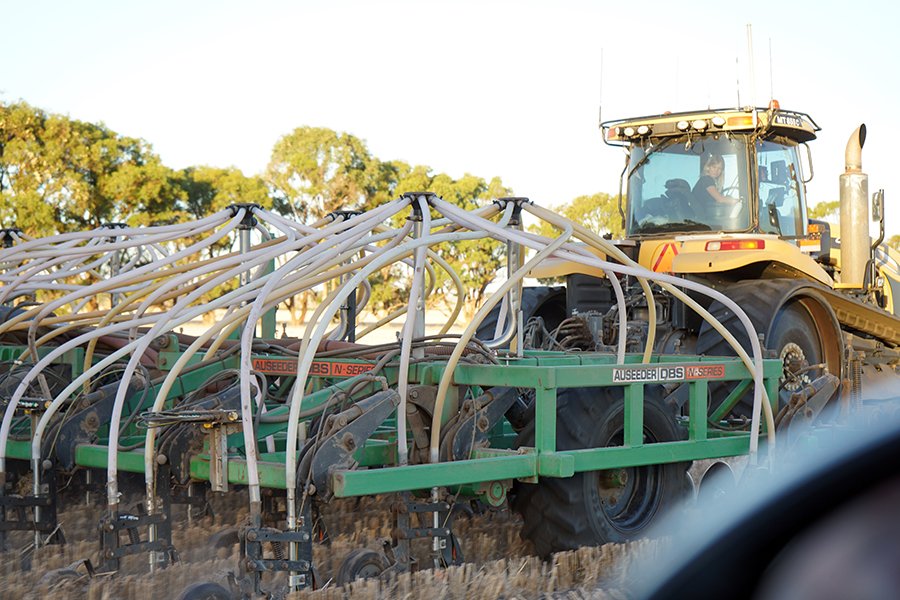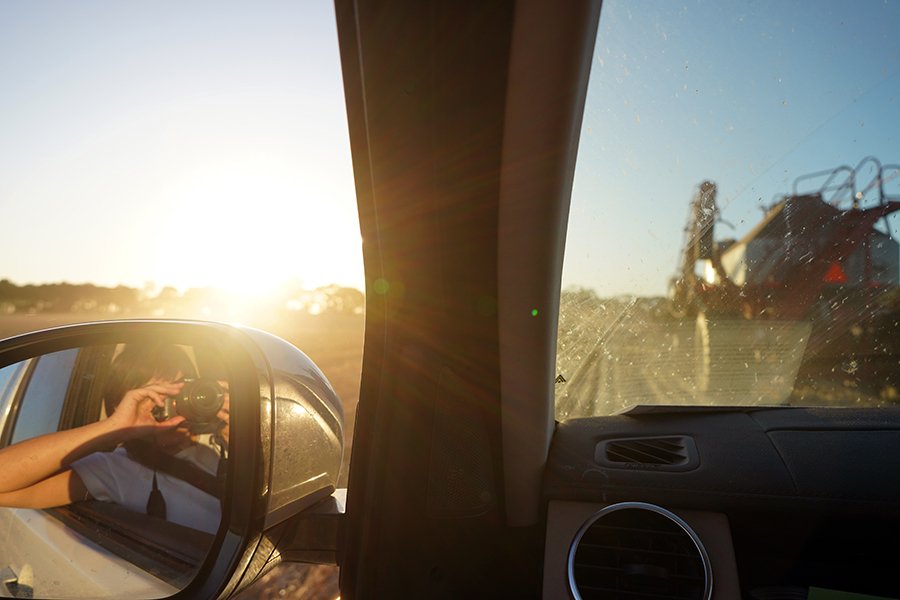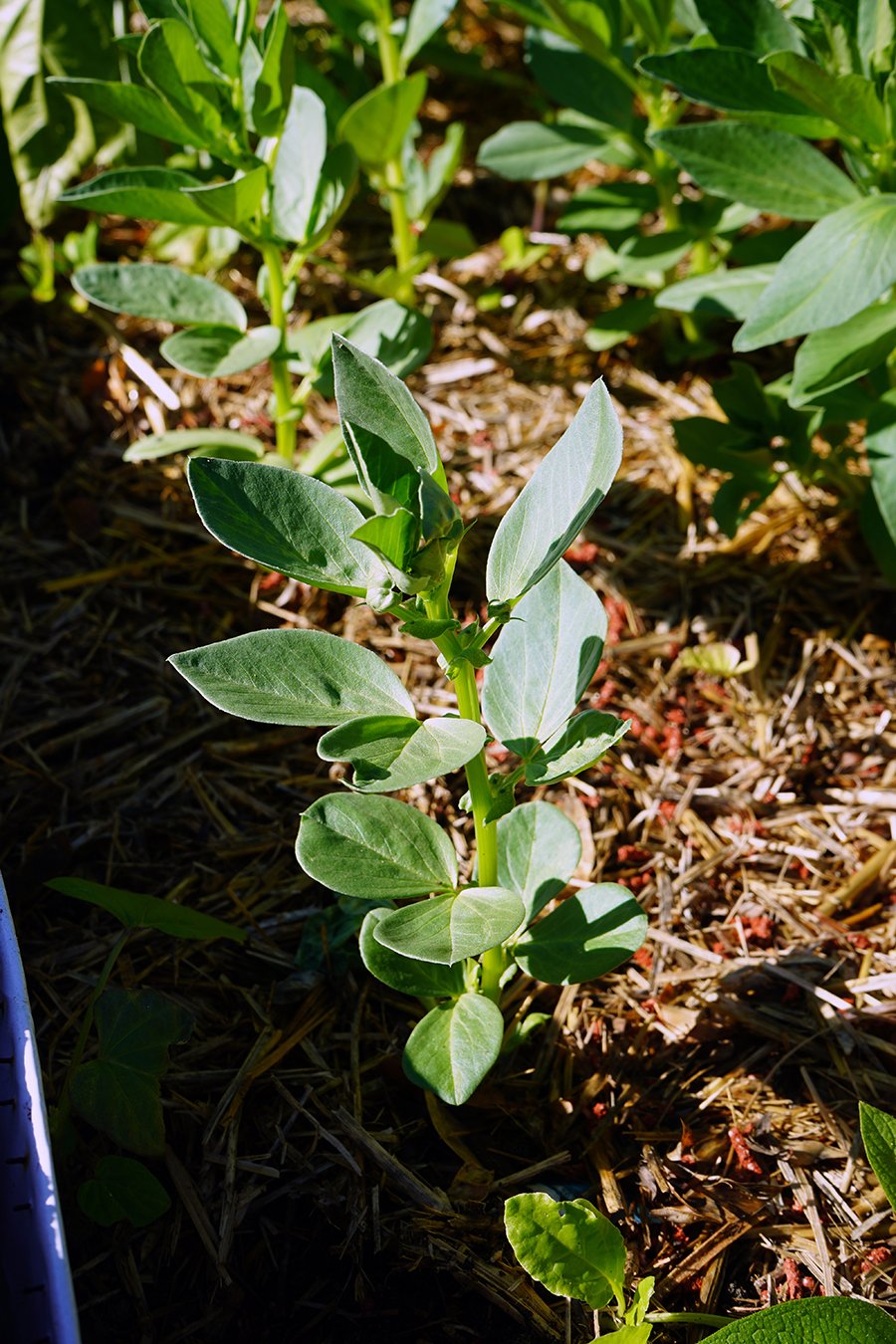Rural Utopias Residency: Ana Tiquia in Esperance #6
Ana Tiquia is currently working with the community of Esperance. This residency forms part of one of Spaced’s current programs, Rural Utopias.
Ana Tiquia is a transdisciplinary artist, cultural producer, curator, and future strategist. Integrating participatory art, design and futures practice, Ana creates public interventions: works that invite audiences into dialogue with ‘the future’. Her practice is one of inclusion that aims to ‘future’ with other humans, creatures, and things – to generate diverse, plural, and transformative future imaginaries. Ana has a deep commitment to the role of arts practice in relation to future inquiry, imagining, and social-ecological change. Her projects explore energy and material futures, futures of work and labour and the power dynamics encoded in algorithmic systems
Here, Ana shares a final update:
It's my last fortnight in Kepa Kurl / Esperance, and much of it has been about planning, running and facilitating a peer-to-peer (p2p) knowledge exchange weekend here at Cannery Art Centre.
In this blog, I want to share some of the thinking, and conversations informing the weekend, while sharing some images that tell a story of what took place. A coda to this includes a trip out of town to the Reichstein farm, and a return to the Forage Community Garden veggie patch.
What can be shared?
The p2p knowledge exchange weekend continues the question at the centre of Seeder Futures: 'what can be shared?' In the spirit of practising power-with and sharing-of knowledge, I invited AGWA curators to meet and exchange knowledge and learnings with local arts and cultural practitioners here. Katie and I have been busy planning this weekend over the month I've been here, inviting local arts and cultural partitioners to join us in two days of co-curated workshops and discussions responding to broad themes of curation, arts, and cultural production.
I've been hoping we can bring people together across practices, organisations, and geographies and that the weekend might spark new connections, build understanding across difference, deepen existing relationships and potentially seed possibilities for collaborations and new work beyond my residency.
The weekend rolls around faster than expected, and 18 of us gather over two days, moving in and out of discussions, facilitating mini-workshops, offering knowledge and learning from others, while sharing meals and time with each other.
Wilman, Ballardong, Whadjuk Noongar artist and curator Zali Morgan (Assistant Curator, Aboriginal and Torres Strait Islander Art, AGWA), and Miranda Johnson (Curator of Rural Utopias, AGWA/Spaced Program Manager) arrive in Esperance to share their knowledge, learn from local practitioners and spend the weekend here. Independent artists and cultural practitioners join us, alongside artists and arts workers from Esperance Museum, Cannery Arts Centre, and Esperance Senior High School.
The premise of the p2p knowledge exchange weekend was that all of us have something to offer, and something to learn.
For the weekend, I've drawn inspiration from conversations I've had with Kepa Kurl / Esperance community members on their practices of giving and sharing, conversations with AGWA staff, as well from decentralised peer-to-peer (p2p) file-sharing protocols.
Christiane Smith, an active community member I interviewed about being a volunteer 'fiery', highlighted that giving of time and knowledge works from the recognition that "everyone has a talent to bring." When I asked her how we could better support those who give their time and knowledge, she emphasised the need to simply find people's skills and talents, and to let people "give them as their expression of love to the community." She went on to add, "I think people are amazing, I really do. But we have to give them space to be amazing." I've been hoping that the p2p knowledge exchange weekend can provide one such space for artists and arts workers in the community, and provide a platform for community members to make visible their talents, passions and skills to each other.
When I first met Zali Morgan at AGWA, we spoke about how change occurs in big art institutions and our conversation turned to questions of access. Zali is passionate about access – she works closely with the collection to find and display work that has never been exhibited. Zali reflected about the physical and structural barriers that restrict people and communities from ever getting close to, or feeling they can 'engage' with an institution like AGWA – let alone its collection. As an artist and curator she described the feeling of "walking in two worlds"; that as an artist looking in on the gallery, AGWA was an intimidating space for both her and her emerging artist peers. Yet, as an AGWA curator, Zali occupies a unique perspective from the inside, which prompted her to recognise the institution wasn't as intimidating as it might first seem. "It looks all muscle," Zali said "but it's actually like a little (teddy) bear...if you threw a stone it'd fall over."
This conversation with Zali and other curators at AGWA invited me to reflect upon my privilege as a person who has always lived in big, urban centres and capital cities, and who has worked with and within large arts and cultural institutions in these cities. I have the privilege of not feeling as intimidated by big institutional spaces anymore, and being able to recognise that large institutions and organisations, while assemblages of policies, procedures, practices, values and beliefs, are largely constituted of people. From experience, I know that people here can be generous, well intentioned, and critical of institutional systems and structures while working with(in) them.
My degree of comfort in institutional spaces experienced by many as discomfort, is a result of this privilege. As is the relative ease with which I can consider cold emailing a curator for a chat. What I encountered in my chats with AGWA curators, the people behind the institution, was that many believe passionately about access, care about the relevance of the State collection to those in rural and regional areas, and are genuinely interested in how more meaningful connections could be made between AGWA and WA arts practitioners in communities such as Kepa Kurl /Esperance.
The p2p knowledge exchange weekend is an acknowledgement of these disparities in power and resources between capital city-based, State galleries such as AGWA; and small, rural, community-run arts organisations and individuals. At the same time, it's a recognition of the wealth of arts and cultural knowledge, skills and experience existent in communities such as those of Kepa Kurl / Esperance. Thinking with the language and architecture of older decentralised, distributed network technologies such as p2p file-sharing systems, I was interested in how I could use this project to bring diverse practitioners together as 'peers', in a spirit of mutual exchange. Could we generate and strengthen connections and build degrees of trust to share knowledge, resources, and power with each other?
The weekend was formed out of three parts: the first was a co-curated, open workshop program where we collectively ran a series of parallel workshops based on the skills, knowledge and interests in the room during the weekend. As a peer-to-peer knowledge exchange the aim was to create a space for collective learning where all of us could teach and learn from each other, and build collective knowledge and capacity. A range of workshops emerged from our discussions around what we'd like to offer to each other, and learn from one another. Discussions and workshops were led on curation, cultural and arts production; the state art collection and collections access; teaching and arts education; inclusive practice and community building; textile and environmental art; developing audiences and communicating our work.
On the Friday night we threw a dinner for all participants, in the Cannery music room. Livvy, a local cook and caterer created a delicious, abundant spread. The sharing of a meal felt just as important as the sharing of knowledge, and I hoped this could be a way we could spend time with each other as 'people', rather than as artists, organisational roles, or titles.
Our co-curated workshops ran over the two days, and for the final session on Saturday I gave a presentation on Seeder Futures, a short exploration of peer-to-peer and distributed file ownership models, and led a discussion to co-create of a protocol for sharing files and digital culture between the community of Esperance and AGWA. The workshop participants gave me plenty to think about in relation to the sharing of digital culture. We focused our discussion around what kind of 'protocol' would need to be in place for the members of the community to both store and share a set of films about giving and sharing in the community, and what values, principles and practices would need to be in place to make this feasible and/or desirable.
This discussion raised great questions, and contributed to an outline of what might form a protocol or set of community guidelines for the reciprocal exchange, storage and sharing of digital files within and between communities – question and prompts I carry with me as I leave the residency and continue the development of Seeder Futures back home.
Seeders and seeding
On my last day here, I'm invited out to Baroona Farm by Megan McDowell. Megan is a farmer and agricultural scientist who owns and manages a property in the Wittenoom Hills with her husband Ash Reichstein. I've been talking to Megan as she works with the Mt Burdett Foundation, founded by her brother-in-law Chris Reichstein before he passed away in 2021. During my stage one residency, I was struck by Chris' story and the work of the foundation. After receiving a cancer diagnosis, Chris transferred his 2900ha cropping farm into a trust to generate income to fund community initiatives and ensure better futures for those in the Esperance community. His foundation now funds several community initiatives in the Esperance region and in other rural West Australian communities.
Megan is the Chair of the Foundation's Esperance Community Advisory Committee and I've been planning to interview her about Chris' story and the work of the Foundation. I've been interested in the work of the Mt Burdett Foundation as a model for giving, sharing and distribution of wealth and opportunity across a community. On this last day, Megan's invited me to experience seeding out on her and Ash's farm. Seeder Futures is a deliberate play on words. On p2p file-sharing programs the term 'seeders' is used to denote those who upload files, store them locally, and make them available for download and sharing by others. (This is as opposed to 'leechers', who download without sharing – all take, no give). Seeders are also agricultural machinery, used to distribute and sow seeds at scale across large paddocks, including the broad acre farms of Esperance. Seeding has just started in Esperance over these last few weeks and I'm keen to see what it looks like.
I borrow Katie's 4WD and drive out to Baroona Farm. It's afternoon tea time and I meet Megan and her daughter, we have a chat over tea and plenty of cakes before driving 15km down the road to one of their paddocks which is being sown with canola. She introduces me to Ash, and we drive alongside one of the big seeders being operated by Esther, a farmworker who has travelled to Esperance from France. I get the opportunity to ride with Esther in her tractor cabin. She has a unique view over the paddock she's working in. As she drives through the paddock, her view from the cabin window is mediated via an array of monitors displaying nutrient, soil and other environmental data. The seeder works quickly –drilling holes, applying fertiliser, placing and covering seeds, rows of seeds sown all within a split second. Neither my eye nor the lens of the camera can register the complexity of the seeder in action, its mechanisms are swift and performed in what feels like an instant.
The next morning is my last one here. I wake early to swim and immerse myself in the clear seawater; the freshness braces me for the fact I know it will be difficult to leave. I return to the broad bean I planted in the Forage Community Garden on my first week back in Kepa Kurl / Esperance. I've enjoyed watching it sprout, unfurl, and grow – inching its way towards the sun as it unfolds new leaves. I think about what has been seeded, what has grown in these past six weeks. I think too about the seeds thrown out that didn't sprout, and how that's okay too – things take the right time and conditions to grow, and not everything can grow at once. I feel I have grown a little here, too.
Perhaps, like this broad bean, I too have put down some roots into the sandy earth of the Esperance Plains. This, of course, makes leaving ever more difficult. Being an artist-in-residence is a funny thing. A residency offers up possibilities for other ways of living, as well as other ways of making, and over these past weeks I've wondered whether I'm 'in residence' or whether I've 'taken up residence' here.
It's been three months in total that I've spent here; I've made friends, joined community groups and felt a part of this community to different degrees, however transient my stay.
I have a flight to catch, but I feel a tug of resistance as I go to collect my bags. I realise this tug is one of connection – a gratitude for my friends here, for the relationships which have grown over these past two residencies, and for the generosity of this community which holds me in place. Plans to return are afoot, we are planning a way to present Seeder Futures in the community once it is complete. No big goodbyes for now. I whisper to the broad bean, the sage, and the sweet potato vine: “See you soon.”
Image Description:
1-2: Meeting and exchanging perspectives and knowledge at the P2P Knowledge Exchange Weekend. Photos by Dan Paris.
3-5: Co-curating our program of workshops for the Friday and Saturday. Workshop participants nominated one thing they wanted to offer the group, and one thing they wanted to learn from others in the group. Photos by Dan Paris.
6: Arts educators Katherine Schubert and Krystal Obschonka record a discussion on teaching and arts education. Photos by Dan Paris.
7-9: Workshopping a community protocol for sharing of digital files and culture. What would need to be in place for ownership of digital culture to be distributed within the community? What principles would need to be in place? How would we need to relate to each other? What means would engender and sustain trust? Photos by Dan Paris.
10: Farmer Ash Reichstein shows me a freshly sown canola paddock.
11: We unearth a canolaseed sown just minutes before by a seeder. Within a split second a seeder drills holes, applies fertiliser and trace minerals, places seeds and covers them with soil.
12. Seeder being driven by Esther, a French farmworker
13. In the tractor cabin with Esther. During seeding, paddocks are sown 24 hours a day for weeks at a time, weather permitting. Farm workers work in shifts, driving for up to 12 hours. The tractor has a surprising number of features including a microwave, so that meals can be heated up and eaten while driving – ensuring that seeding runs continuously.
14. Huge amounts of data are gathered on soil profile, minerals and nutrients required for specific zones across each paddock. Esther and other workers driving seeders are surrounded by monitors that visualise this data. The seeding process is largely automated, allowing for specific quantities of fertiliser and trace minerals to be applied across the paddock – more in some areas, less in others.
15. 'My broadbean' growing in the Forage Community Garden, Cannery Arts Centre.
Thank you
Huge thanks to all who participated and joined the P2P Knowledge Exchange Weekend: Zali Morgan (Artist and Assistant Curator, Aboriginal and Torres Strait Islander Art, AGWA) and Spaced Curator Miranda Johnson (Curator of Rural Utopias, AGWA/Spaced Program Manager), Aunty Annie Dabb, Brooke Elson, Caitlyn Edwards, Chloe Matthews, Jennelle Griffiths, Jen Ford, Katherine Schubert, Katie White, Krystal Obschonka, Lynda Horn, Mylene Van Heijster, Sarsby Martin, Shannan Gillespie, and Thuriyya Ibrahim.
Thanks also to Dan Paris for photography and video documentation, Livvy from Rolled With Love for the beautiful dinner, Claire Mitchell for gifting flowers and ceramics, fellow artist-in-residence Rosie Boland who kindly made napkins and tablecloths, and Katie White, for her brilliant producing, logistical skills, and generosity

